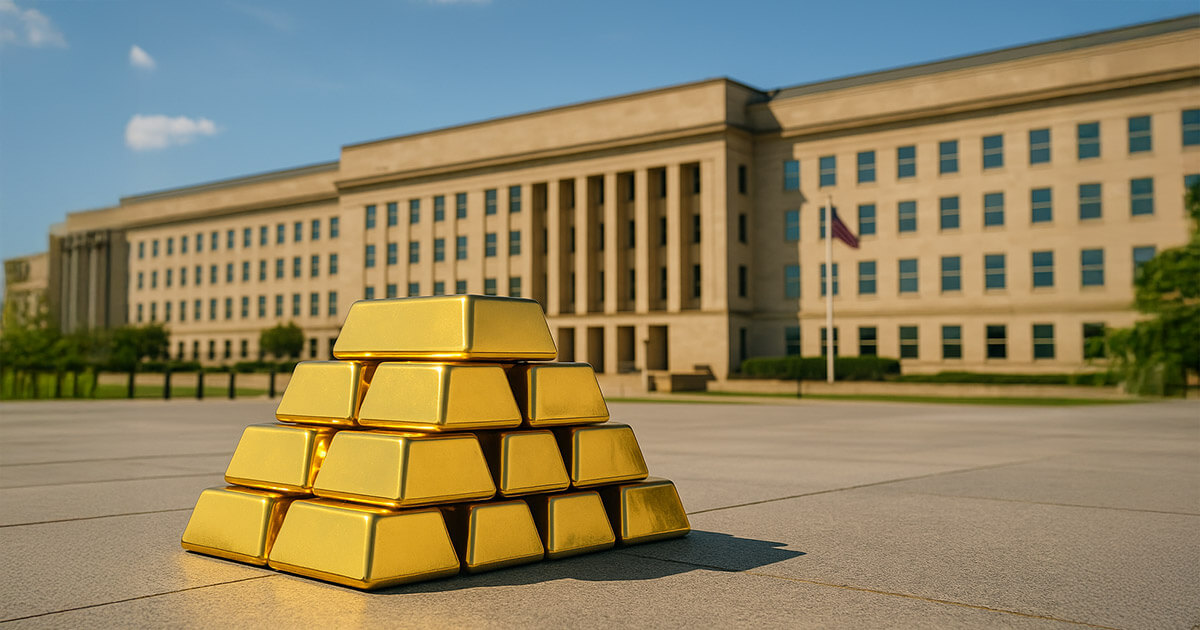The Pentagon doesn’t typically engage in commodity speculation, but when national security is at stake, the old rules are expected to change. The Financial Times reports that the US Department of Defense has launched a billion-dollar drive to stockpile critical minerals such as rare earths.
This includes everything from rare earths to strategic metals needed for electric vehicles, fighter jets and semiconductors. The goal? Develop internal resilience. Break dependence on a Chinese supply chain that has proven to be anything but reliable.
The move to acquire critical minerals worth up to $1 billion is part of a global stockpiling effort aimed at countering Chinese dominance. It highlights a strategic shift that echoes Cold War-era stockpiling programs. Back then it was oil. Today, let’s think about lithium, cobalt, nickel and rare earths. Basically, everything you’ll find in Teslas, missile guidance systems, smart bombs, and high-frequency radars.
Supply chain jitters have been brewing for years, but reached critical mass after China imposed new restrictions on the export of rare earths and other strategic materials. The move immediately caused an earthquake in international markets, including Bitcoin and cryptocurrencies, with Donald Trump throwing out Truth Social:
“China is becoming very hostile and sending letters to countries around the world saying they want to impose export controls on any and all production items that have to do with rare earths and pretty much anything else they can think of, even if it’s not made in China.”
The Pentagon’s move is not speculative; It is a defensive posture. It is one of the largest mineral acquisition efforts in decades, and Washington is not alone. Brussels and its allies across Europe are rushing to catch up, making reserves for both the risk of war and the energy transition.
China throws a lifeline to the markets
In a major development on Sunday, Beijing appears to have softened its stance. China defended its recent export controls as “legitimate,” emphasizing that they are in line with international law and aimed at safeguarding global peace and stability (not instigating economic war).
Importantly, China clarified that these controls are not absolute bans, adding that export applications that meet the criteria will continue to be approved and that dialogue channels with major trading partners will remain open. Chinese officials said the controls do not amount to export bans and that applications that meet the criteria will be approved.
This softer rhetoric should begin to calm investors’ nerves. With China showing room for flexibility and negotiation, analysts are now reconsidering previous risk scenarios. The possibility of a resumption of dialogue and a less aggressive stance from Beijing could trigger a relief rally in commodities, gold and even risk assets like Bitcoin if supply chain fears ease and global trade frictions moderate.
What the rare earth movement means for gold and Bitcoin
Every time government reserves and resource nationalism re-enter the picture, gold’s status as the ultimate safe haven is reinforced. However, this time it has nuances. The rush for battery metals and rare earths indicates that “strategic value” is expanding beyond just gold bars in the basement.
Commodity investors could see a shift in portfolio strategies, with gold retaining its status as a last resort hedge, but now adding new “safety minerals” as protection against geopolitical shocks.
If these measures intensify, gold could benefit from renewed safe haven flows, especially if China responds tit for tat and financial markets falter. However, if China’s softening stance leads to constructive talks and stabilization of supply chains, gold’s rally may be tempered by a broader risk-on recovery.
As for Bitcoin, its appeal as “digital gold” has always depended on scarcity, resistance to censorship, and detachment from the physical world.
But the Pentagon’s mineral hoarding highlights one of Bitcoin’s paradoxes: It is immune to supply chain disruptions, but exposed to a broader sentiment of risk aversion. If trade tensions worsen, investors could turn to the dollar, gold and potentially Bitcoin, seeking refuge from currency and commodity volatility.
Bitcoin mining reserves historically rise during periods of macroeconomic uncertainty, although the asset itself may trade more as a risk technology in the near term. Meanwhile, supply chain disruptions in hardware markets (chips, platforms, semiconductors) could affect the economics of Bitcoin mining, but will not affect the core narrative of scarcity.
If China’s tone remains dovish, crypto markets and risk assets could see a rally as worst-case scenarios unfold. As The Kobeissi Letter published:
“If President Trump responds and de-escalates on Sunday, markets will take a big jump on Monday.”
With the Pentagon and Europe stockpiling minerals, the definition of “store of value” is changing. Gold is not becoming less relevant; is having competition. Bitcoin’s appeal endures, especially for investors tired of government control or physical limitations.
And while a billion dollars might be a drop in the bucket of global resources, the symbolism says it all. As Gold Telegraph commented on X:
“The race has begun”



